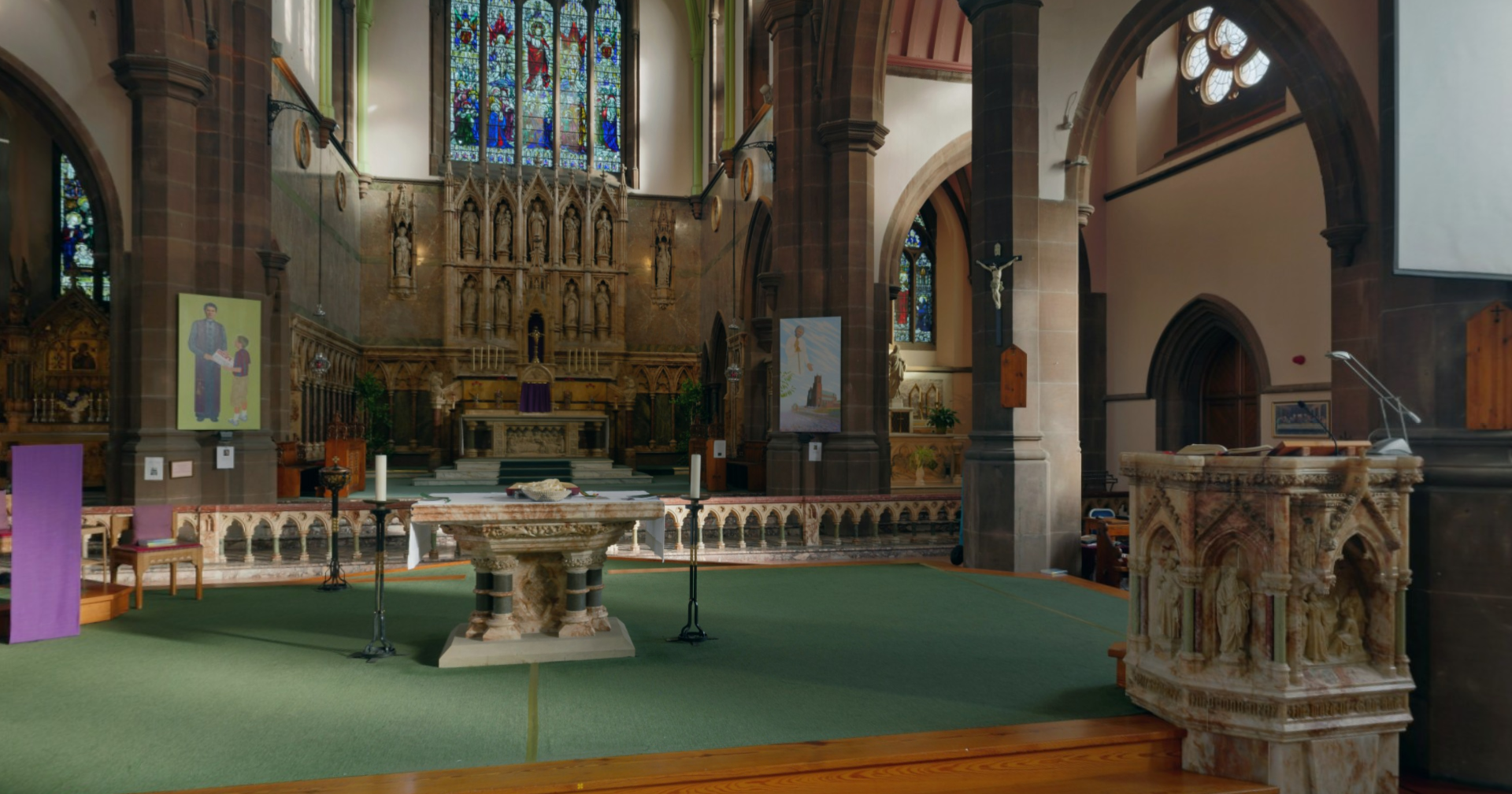Parish History
Bootle is an ancient settlement, mentioned in Domesday. The dominant landowners in the area were the Earls of Derby. At the time of the establishment of a mission here, in 1845, the population was just over 3,000. Rapid expansion stimulated first by the Leeds and Liverpool Canal and later by the northward expansion of Liverpool docks meant that by 1900 the population had risen to 58,500. Bootle laid claim to be the most Catholic borough in the land.
A Gothic Revival church was built in Marsh Lane in 1845, from designs by Charles Hadfield of Sheffield, at a cost of £1,800. A school followed in 1848. However, in the early 1880s the site of both church and school were sold for £20,000 to the Lancashire and Yorkshire Railway Company. This enabled a large new church, schools and presbytery to be built in Chesnut Grove, also to Hadfield’s designs, and opened by Bishop O’Reilly on 7 February 1886. Hadfield had died in 1885, at which time only the chancel had been completed; the work was completed by his son Charles. The Catholic Times wrote on 12 February:
The present stately structure is the outcome of the energy and cultivated architectural taste of the esteemed incumbent, the Very Reverend Dean Thomas Kelly, who has throughout taken a keen interest in the work...The church which affords accommodation for over 1,000 people consists of nave and aisle, and a well-proportioned chancel and side chapels with stone vaulted ceilings, and a range of confessionals adjoining the tower and south aisle. The choir and clergy vestries are placed at the south side, communicating with a commodious clergy house, with accommodation for five priests.
In the ensuing 15 years or so the church was sumptuously fitted out. In 1893 the Stations of the Cross and marble pulpit were given by the congregation. In 1896 the tower was completed (to a different design with an octagonal stop stage; an original drawing by Hadfield hanging in the presbytery shows a saddleback roof). In 1900 Mrs R.E. Lynch paid for the furnishing of the sanctuary, with a marble altar and reredos, marble panels lining the walls, altar rails, and a stained-glass window of the Ascension. In 1902, an anonymous donor paid for an altar (photo bottom left) and stained glass in the Lady Chapel. In 1922 a peal of bells cast by O’Byrne of Dublin was installed in memory of Canon Kelly. In the early 1930s a new marble Sacred Heart altar and steps were fitted, by an Italian craftsman.
In 1941 the east windows of the sanctuary and the Lady Chapel were destroyed in the blitz, but the church otherwise escaped serious damage.
Post-Vatican II reordering involved the creation of a dais and introduction of a nave altar in front of the communion rails. The original sanctuary was left undisturbed. The font was moved to the new altar area and the baptistry converted to a memorial chapel.
Since 1987 the parish has been served by the Salesians of Don Bosco.
The church is included on the National Heritage List for England. It is listed Grade II on account of its special architectural and historic interest.
Recent News
Thanks to the National Lottery Heritage Fund and the support of the Archdiocese and parishioners, the end of 2019 saw the completion of a major scheme of structural and masonry repairs to the tower of St James’ Church in Bootle.
For years the striking 120ft tower had been plagued by structural defects to its bell chamber floor and bell frame structure, as well as substantial erosion to its external sandstone walling. In 2012 bell ringing had to be stopped due to safety concerns and things really came to ahead in 2017, when structural investigations determined that the bell chamber floor would eventually collapse if remedial works were not undertaken.
A large scale repair and restoration project was subsequently devised and, after a two-stage application to its Grants for Places of Worship programme, the National Lottery Heritage Fund awarded the parish an overall grant of circa £190k.
Works began in March 2019 and involved the complete replacement of the existing reinforced concrete bell chamber floor, the refurbishment of the bell frame and bells, extensive repair works to external masonry and the renewal of the tower roof covering.
In addition to putting right the serious defects, the restoration works also gave the parish the opportunity to reach out into the local community to raise awareness of not only the project but also of St James’ Church itself as an important Grade II listed building and local landmark.
Commenting on the grant award, Neil Fewtrell, the Archdiocesan Surveyor responsible for overseeing the project, said:
“The support of the National Lottery Heritage Fund and parishioners has helped relieve the parish of an overwhelming burden. No longer does it have to face the daunting prospect of a complex and unaffordable repair scheme. The church has served as a place of worship and community asset for the past 135 years and it’s great to know that we are a step closer to preserving it for many more generations to come.”
Father Jim McGarry, assistant Parish Priest at St James’ added: “On Sunday mornings, parishioners are now called to Mass by ringing the peal of bells. What a joy it is to hear the bells once again!”







